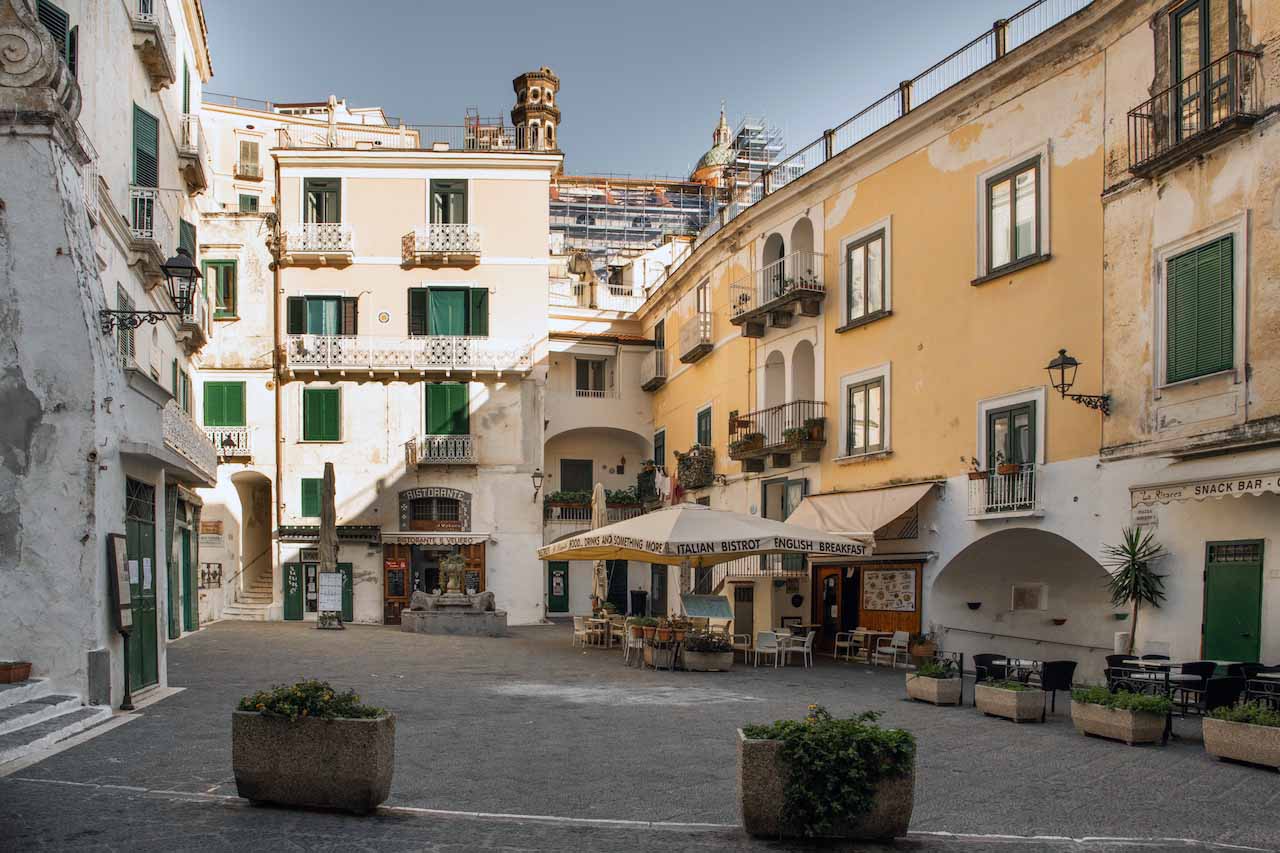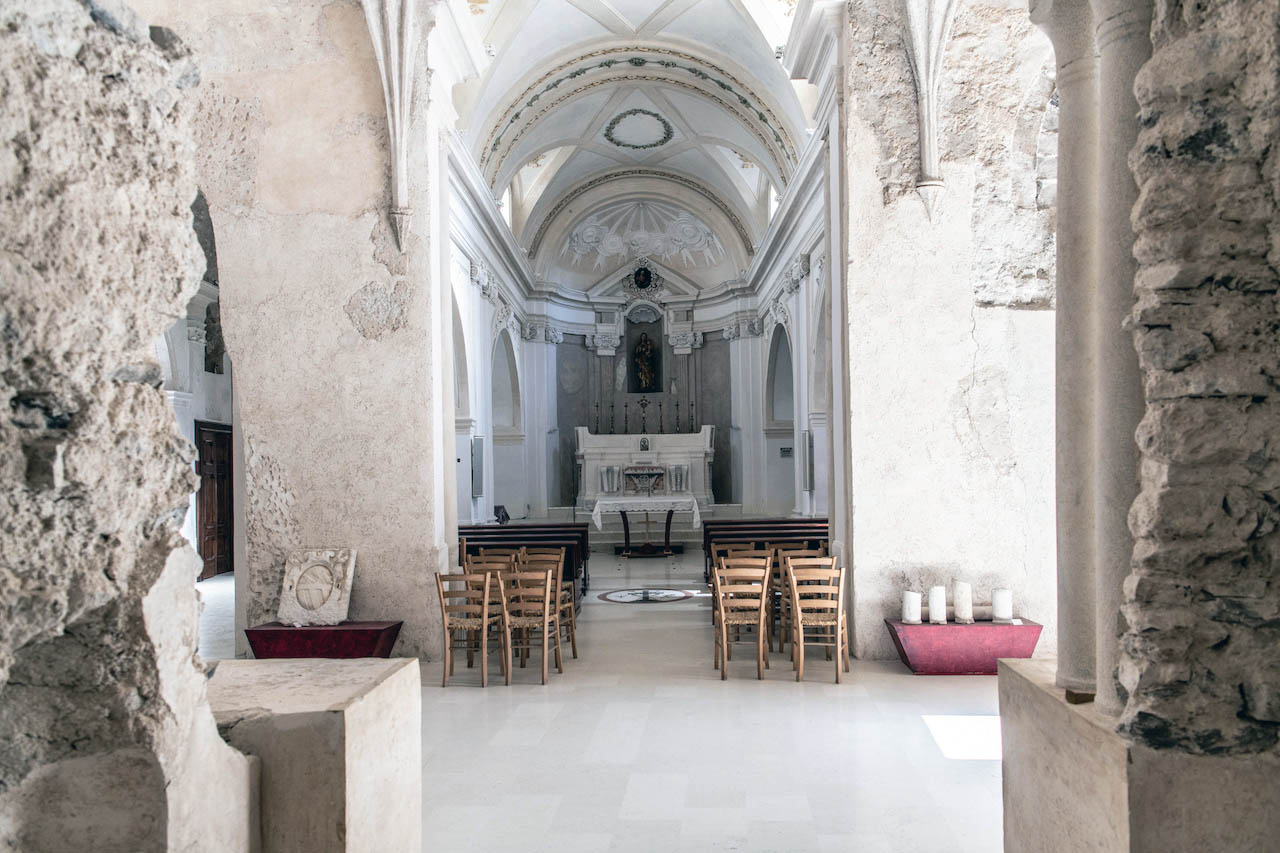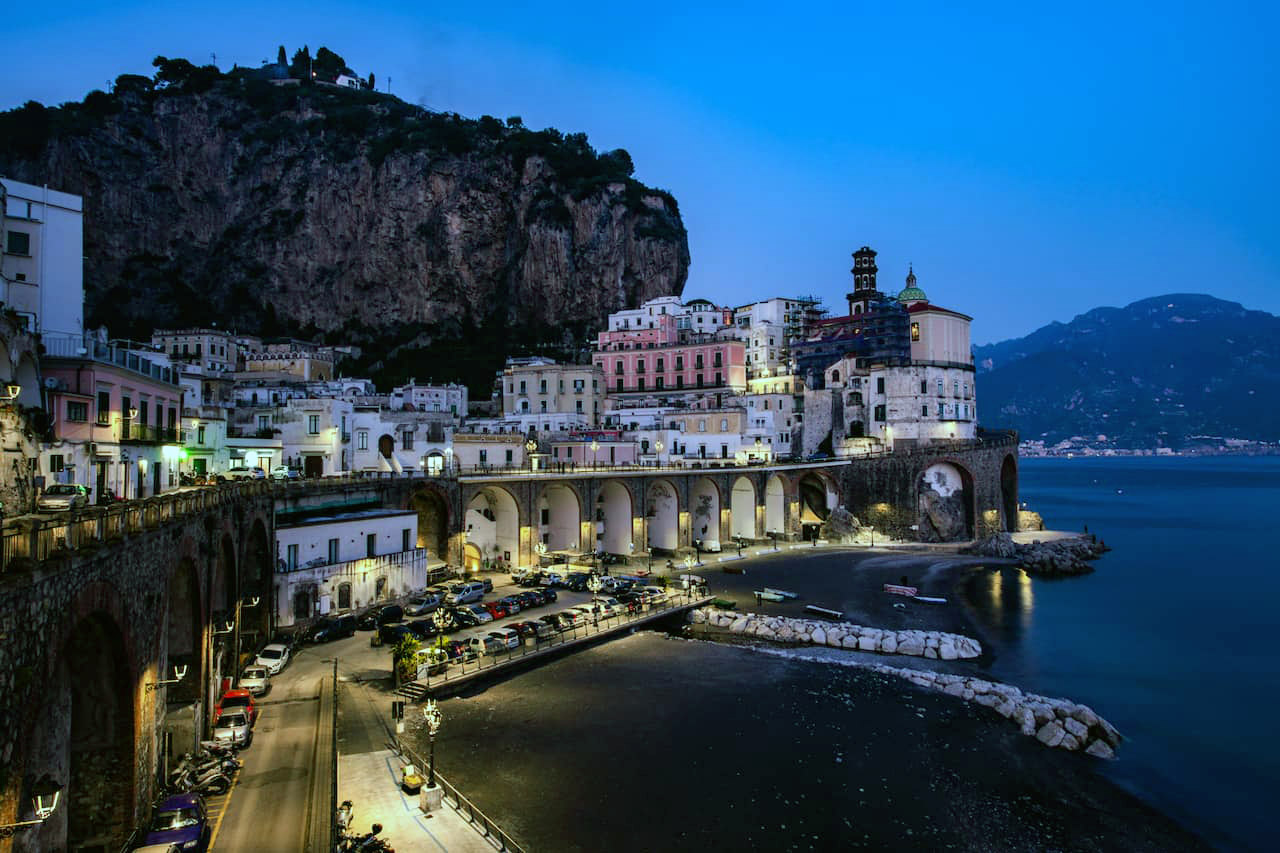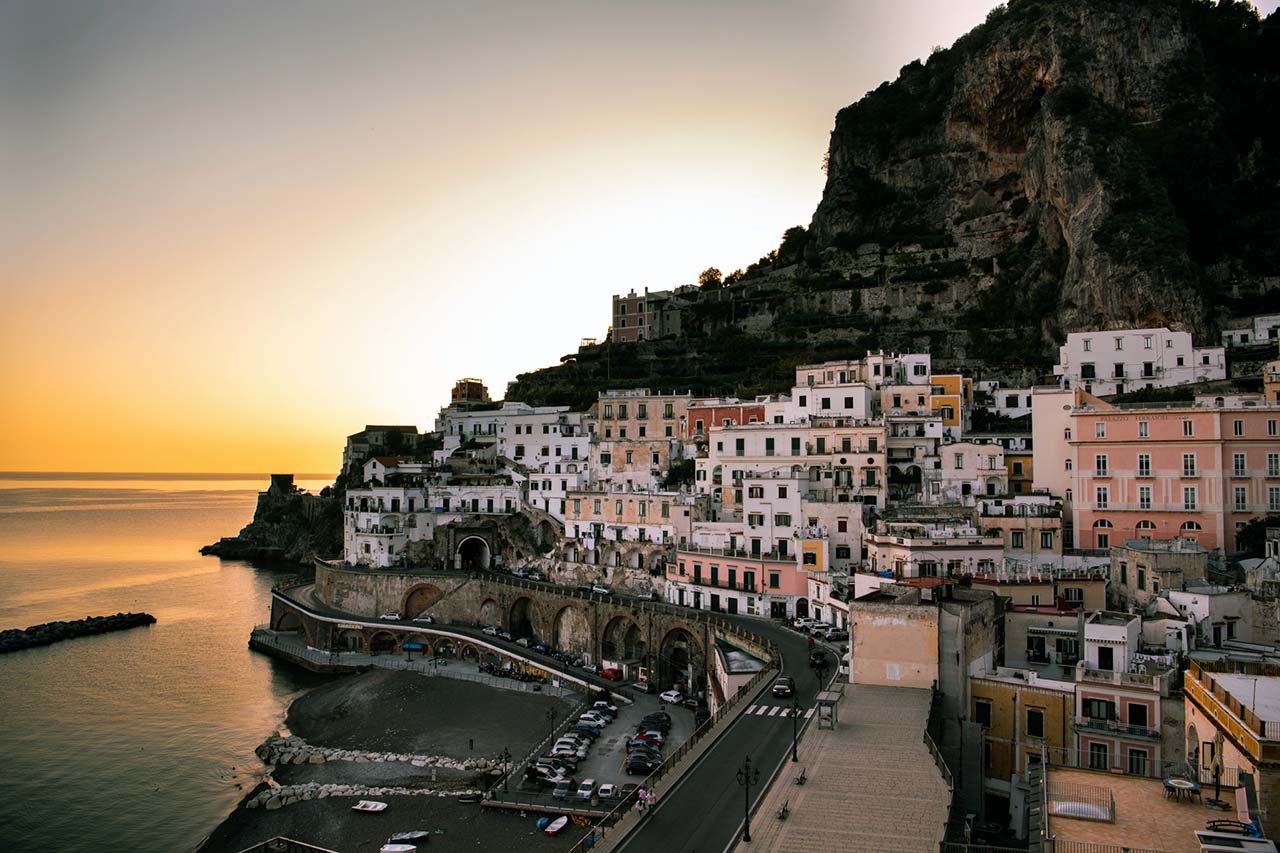In Italy’s smallest village where life’s troubles dissolve in the sigh of the sea
April 3rd, 2023. By Imma Tralli, photo by Vito Fusco
Driving down the 163 state road, not even at 1 km from Amalfi, you will encounter a little town where it seems like time has stopped and where all the problems may disappear with the sound of the sea.
Atrani (0.1206 km²) is the tiniest village in Italy and one of the most picturesque places where every corner turns into a chance to discover artistic pieces dating back to the XII/XIII century, such as medieval and Romans columns and capitals.

Merging of Mediterranean elements
During the X and XI century, Atrani was the political center and the residential area for the aristocracy, while religious ceremonies were held in Amalfi. The traces of this illustrious past can be seen in the “tower-houses” characterized by «stacked floors, each presenting a gallery with cross-vaults and columns with bell-shaped capitals,» explains Lina Sabino. She is an honorary atranese and art historian who worked until 2010 as a superintend of Artistic Heritage of Salerno and Avellino.
Historically, this area was emancipated from the Byzantine Empire thanks to a three-way trade: «people from Atrani and Amalfi were extraordinary businessmen and traded luxurious goods from the Amalfi Coast. Africa, also connecting Istanbul and Rome,» explains Sabino. This trade became so successful that Amalfi, from the second half of the 900 ‘till the 110, turned into the Mediterranean sea’s biggest bazaar where different customs, traditions, and cultures coexisted peacefully.

The sense of community
Piazza Umberto I, the village’s main square, is surrounded by a magical atmosphere of lights and iridescent colors and is always full of people looking for a quick coffee or a chance to chat. «Atrani is a lifestyle, and this square is its beating heart: a place where locals get together to party, play, and eat. During the wintertime, it’s not unusual to catch up with a couple in love just strolling by happily,» says Sabino.
Living here is very private, thanks to the bridge built in 1822 to connect Vietri Sul Mare to Positano. «Surely, this bridge gave Atrani more intimacy and a relaxed atmosphere. We could trace its construction thanks to Vista di Atrani, an Austrian artist Joseph Rebell’s painting in 1818 that doesn’t portray the bridge. Instead, only a road leads to the sea along with the Collegiate of Santa Maria Maddalena.»

The echo of the past
If we stand in the square Umberto I and listen to the quiet village’s rhythm, we can also see the Church of San Salvatore de Birecto and its bell tower that “chimes the hours, even if time cannot be defined here.” «We are talking about one of the most ancient monuments on the Amalfi Coast. Created during the X century, San Salvatore is an important cultural and religious heritage asset. It has been said that the investiture ceremony of the Amalfi Duke took place there,» says Bonaventura Esposito, researcher, and expert on the religious history of the Amalfi Coast.

The village’s magical atmosphere
The name Atrani comes from the Latin word atrum, which means rocky place, gloomy. Surrounded east by Monte Civita and west by Monte Aureo, the village of Atrani is a perfect example of the harmony between men and nature, a kind relationship that inspired many artists and intellectuals, such as Mauritius Cornelis Escher, during the twentieth century.
Regarding his journey on the Amalfi Coast around the 1930s, he said that he loved Atrani, especially its “magical atmosphere.” And it was indeed the symmetry, the repetition of shapes and jumps from light to shade, typical of Atrani, that inspired the woodcut prints Metamorphosis, made between 1930 and 1934 by the dutch artist.
The writer, Roberto Pane, in his novel “Sorrento e la costa” (Edizioni Scientifiche Italiane, Napoli), also describes Atrani as a “village” that attracted him because of its nature. “Bright and splendid that shines among the rocks, that gets reflected from the white plaster of the houses, and a nature that tries to earn every plain field.”

The timeless journey
The village is a little but precious gemstone that reflects thousands of colors. Atrani reflects the beauty of nature intertwined with life, as shown in the latest tv commercial Ferrari Portofino M. Discovering means waking up in the first sunlight and then going to bed with the image of the light used by the fishermen while working at nighttime. Atrani is a journey that never ends.
Borrowing the words of the famous writer Saramago: “You have to see what you missed the first time, see again what you already saw, see in springtime what you saw in summer, in daylight what you saw at night, see the sun shining where you saw the rain falling, see the crops growing, the fruit ripens, the stone which has moved, the shadow that was not there before […]“. It is what happens in Atrani. You have to start the journey anew. Always.
(Transaltion by Michela Pandolfi)

